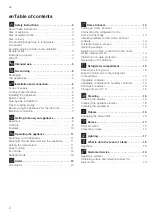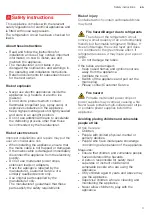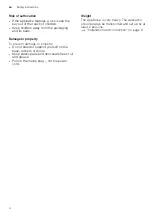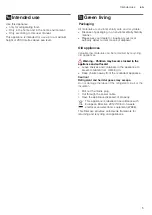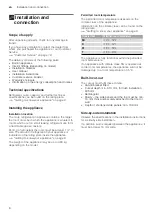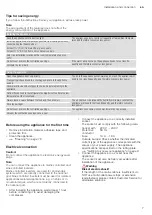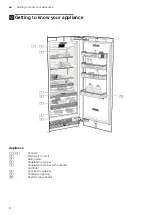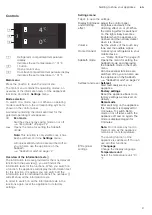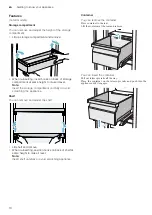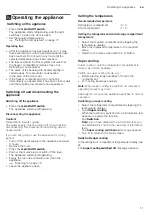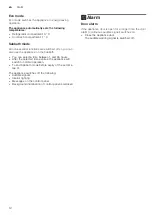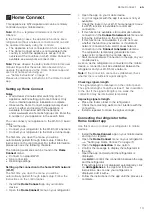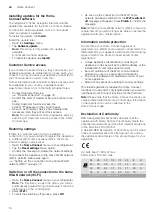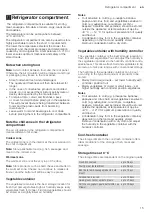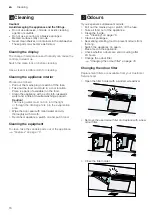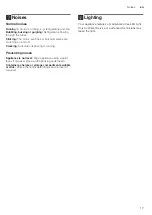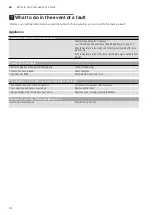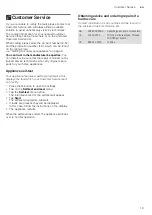
Installation and connection
en
7
Tips for saving energy
If you follow the instructions below, your appliance will use less power.
Note:
The arrangement of the features does not affect the
energy consumption of the appliance.
--------
Before using the appliance for the first time
1.
Remove information material, adhesive tape and
protective film.
2.
Clean the appliance.
Electrical connection
Caution!
Do not connect the appliance to electronic energy saver
plugs.
Note:
You can connect the appliance to mains-controlled and
sine-controlled inverters.
Mains-controlled inverters are used for photovoltaic
systems which are directly connected to the national
grid. Sine-controlled inverters must be used for isolated
applications.Isolated applications, e.g. on ships or in
mountain lodges, which are not directly connected to
the national grid.
1.
After installing the appliance, wait at least 1 hour
before connecting it to avoid damaging the
compressor.
2.
Connect the appliance to a correctly installed
socket.
The socket must comply with the following data:
Outside Europe: Check whether the indicated
current type of the appliance corresponds with the
values of your power supply. The appliance
specifications are specified on the rating plate.
"Getting to know your appliance" on page 8
3.
Connect the appliance to a socket near the
appliance.
The socket must also be freely accessible after
installation of the appliance.
:
Warning
Risk of electric shock!
If the length of the mains cable is insufficient, do
NOT use multi-outlet power strips or extension
leads.Instead, please contact Customer Service for
alternative solutions.
Installing the appliance
Keep the appliance out of direct sunlight.
The appliance needs to cool less frequently at low ambient tempera-
tures and therefore consumes less power.
Install the appliance as far away as possible from heating elements,
cookers and other heat sources:
At least 1¼" (3 cm) from electric or gas cookers.
At least 11¾" (30 cm) from oil or solid-fuel cookers.
Select an installation location with a room temperature of approx.
20°C.
Do not cover or block the ventilation openings.
If the warm air can escape, the appliance needs to cool less fre-
quently and therefore consumes less power.
Ventilate the room daily.
Using the appliance
Open the appliance door only briefly.
The air in the appliance will not warm up as much. The appliance will
need to cool less frequently, and therefore consume less power.
Transport purchased food in a cool bag and place in the appliance
quickly.
Allow warm food and beverages to cool down before placing in the
appliance.
Defrost frozen food in the refrigerator compartment to utilise the low
temperature of the frozen food.
Always leave a space between the food and the back wall.
The air can then circulate and the humidity will remain constant.The
appliance will need to cool less frequently, and therefore consume
less power.
Pack food airtight.
Do not cover or block the ventilation openings.
The appliance consumes less power if warm air can escape.
Vacuum the ventilation openings once a year.
Socket with
220 V ... 240 V
Protective
conductor
50 Hz
Fuse
10 A ... 16 A


